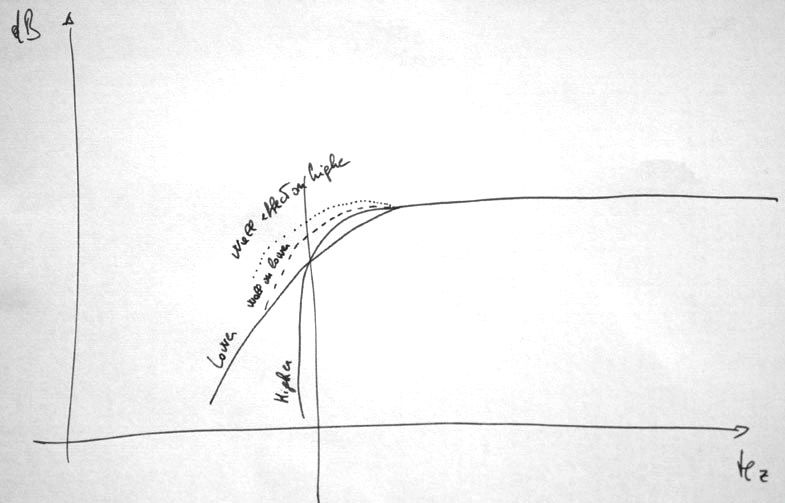Manual
The complete Handbook is still in draft statusBass Reflex
Front ported:
The advantage of this kind of port is that it minimises the side wall and corner effect giving a much more defined and precise bass. Furthermore it allows to position the loudspeaker nearer to the back and side wall without the normal disadvantages of near-wall positioning.Rear ported:
The advantage of this kind of port is that it maximises the wall and corner effect to sustain the bass in the lower frequencies.Floor ported:
Having an opening to the floor, the bass level of the speaker can be tuned changing the height of the loudspeaker to the ground. This effect applies both to bass horns and to bass reflex ported to the ground. To better understand this behaviour, You can look the picture below. This picture is just a qualitative frequency response curve, does not pretend to be accurate and mean something different than a rough description of an effect.In this picture You can recognise this behaviour:
Curve 'Higher': indicates the rough frequency response of the loudspeaker in the standard floor distance position
Curve 'Lower': explains how the lowering of the loudspeaker changes the frequency response
Normally setting a loudspeaker near the wall ('Wall effect on higher', dotter line) brings an increase in the bass frequencies that sometimes tend to disturb the proper music listening. This can be tuned lowering a little bit the loudspeaker ('Wall effect on lower', dashed line).
In certain circumstances, an additional advantage of this feature resides in the fact that if Your room does have some nasty modes in the bass propagation, this could be partially solved using this feature of the loudspeaker.

Bass Reflex tuning
• If you want to reduce the bass level without moving the speakers further from the wall, you can put some foam inside the bass reflex opening of the speakers
• Too much foam in the bass reflex opening might give a sensation of dumbness
• If You completely close the bass reflex tunnel, You transform the loudspeaker in a closed cabinet loudspeaker. The cross overs are developed even with this kind of operation in mind
• Too much foam in the bass reflex opening might give a sensation of dumbness
• If You completely close the bass reflex tunnel, You transform the loudspeaker in a closed cabinet loudspeaker. The cross overs are developed even with this kind of operation in mind